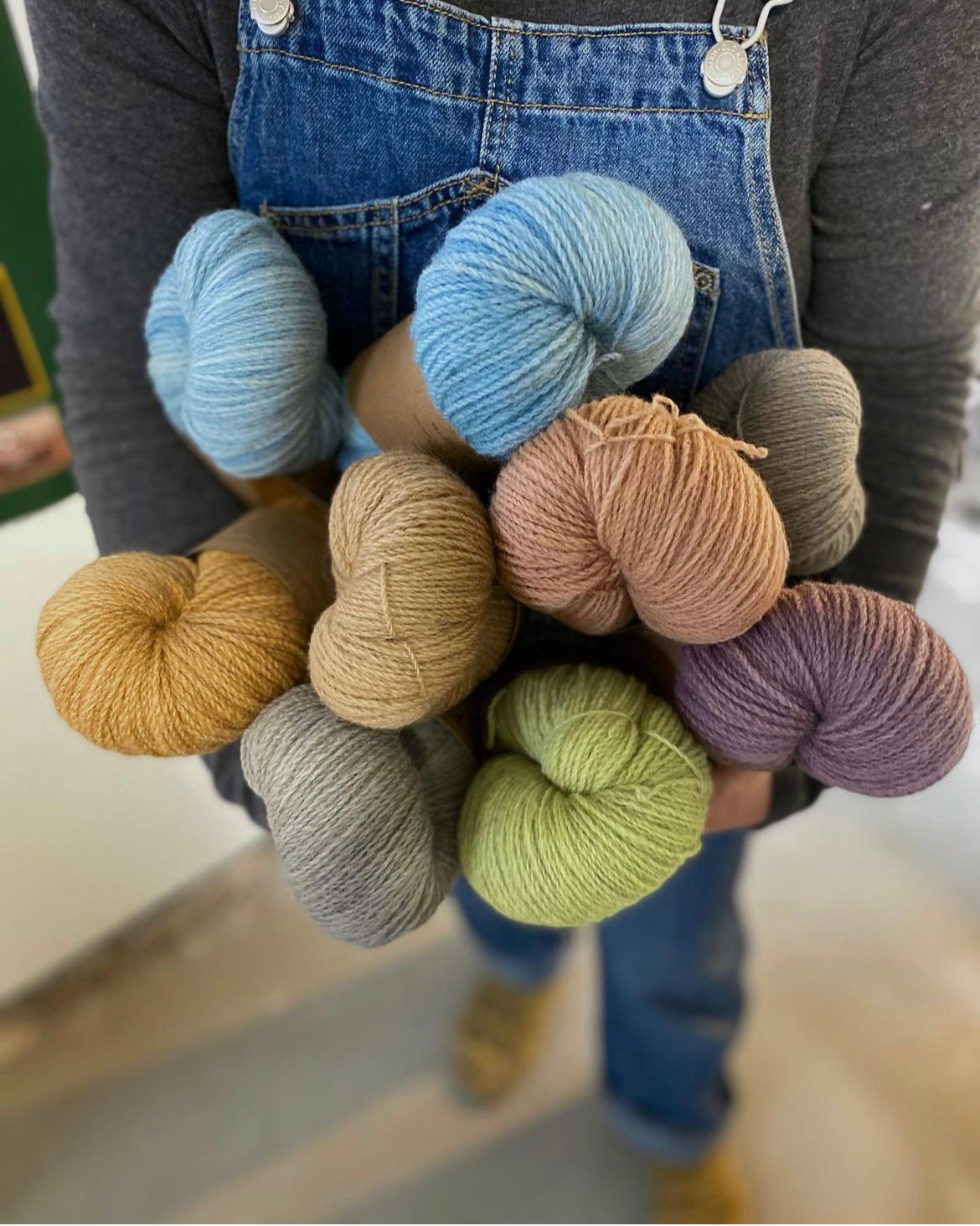- Thank You for stopping by, the shop is currently empty as I am taking a break from my dyepots…
- My Patterns can also be found on Ravelry
Collections
-

Trillium Sock
This Limited Edition small farm yarn comes from a single flock of...
Collapsible content
Just some of the dyestuffs I use ....
- Madder or Madder Root - madder is one of the oldest dyestuffs known, only the root is used for dyeing. It grows wild in many parts of the world including India, Australia, Japan and Turkey.
- Indigo is extracted from a small shrub that grows in hot, humid climates all over the world; the Roots & Rain Yarns Indigo was grown in India. Indigo is widely regarded at the most successful dye plant ever known. An Indigo dye vat is created and the yarn is dipped into the vat until the desired colour is achieved. Much like your favourite jeans, true Indigo never really sets and will continue to fade over time. You can expect blue hands, blue needles, and blue water. All part of Indigo’s charm!
- I gather Black Walnuts locally from the Eastern Black Walnut tree, they cover the ground under the trees and look like green golf balls. It is the outer green hull, that when cooked and steeped for long periods produces beautiful warm brown, tan and even gold dyes. Black Walnut has long been used as a natural dye for yarn and clothing and was one of the earliest sources for quill and fountain pen ink.
- Cochineal is a tiny insect that lives on cactus plants. The insect produces carminic acid as a defence against predators and it is this acid that makes the dye. Cochineal was used by the Aztec and Mayan people and was once more valuable than gold. The Cochineal used in Roots & Rain Yarns is organically grown in Peru and was harvested ethically after the insects had lived their life cycles.
- Onion Skin - I use a combination of both yellow and red onion skins to create bold yellows.
- Osage Orange trees are commonly found in Arkansas and Texas, the wood of the tree is a brilliant, naturally occurring yellow which is very light and colourfast. Sawdust from the tree is heated and steeped to produce a wide range of yellows and golds.
- Pomegranate - the rind of the fruit is dried then chopped or ground. Long slow simmering brings out the best of pomegranate's rich colour.
- Goldenrod is a native flowering plant that grows wild in many areas and has been used in traditional herbs, medicines and of course dyes. Often considered a weed in North America, Goldenrod is prized by gardeners in other countries and is sometimes considered a sign of good luck and fortune.
- Henna - leaves are dried and then ground to make a fine powder. Henna colour can vary greatly depending on the time of year which it is harvested. These same Henna powders are used to dye hair, nails and skin - such as Mendhi.
- Logwood - woodchips come from the heartwood of the Logwood tree, found in many parts of the world including Mexico, Venezuela and Madagascar. A dyebath is made by long slow steeping, heating and straining several times.
- Marigold flowers are harvested then dried. They can then to be used anytime though out the year to create sunny yellows.
- Chestnut trees are found in many parts of the world, dye can be made by using both the nut and the shell, simmering over a low heat creates warm, earthy browns.
- Turmeric is the spice that gives curry it's yellow colour, it has been used for thousands of years in Indian and Asian cuisine and medicine. It is known to have healing properties. As a dyestuff, Turmeric adds a rich exotic golden yellow. When used with other dye materials, Turmeric is very light and colour fast.
- The Lac insect produces a resin which is left behind on fig trees mainly in India, Burma and Nepal. It is then harvested and dried to make Lac dye.
- Iron is added to the dye bath to alter or deepen the naturally occurring colours.
- Tansy's beautiful yellow flowers can be seen along roadsides and hedges mid summer to early fall in many parts of North America. I am always delighted when the first Tansy appears in the fields near my home. Tansy has a long history of use dating back to ancient Greece where it had a variety of medical uses. Irish folklore suggested that bathing in Tansy would cure pain and purify the skin.









